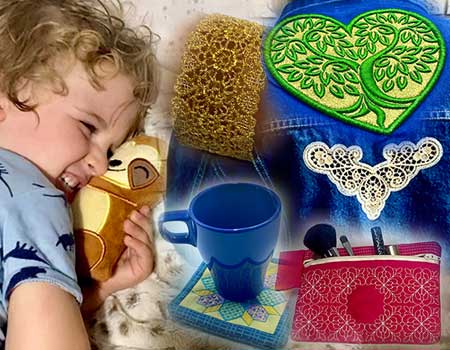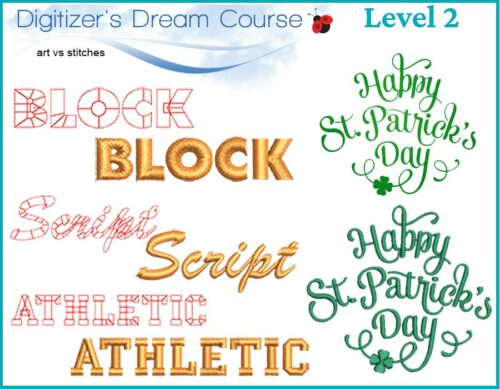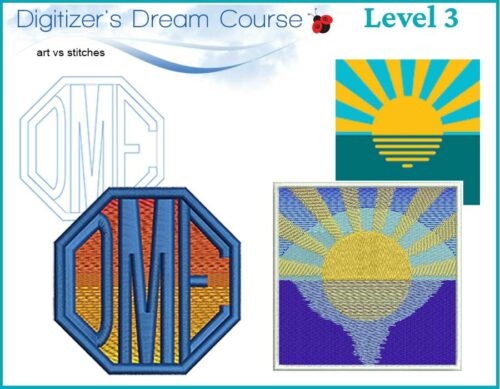-
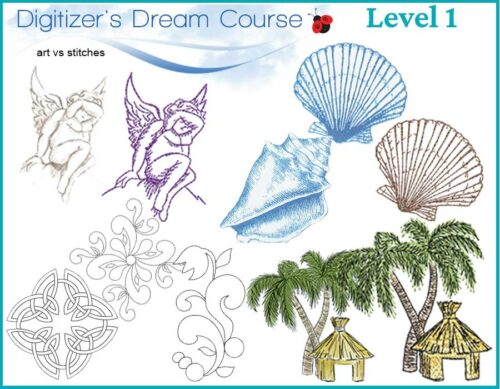 Level 1 is where we suggest everyone starts whether you’re completely new to digitizing or have been at it for a while. In this level, you’ll learn some of embroidery’s best kept ‘secrets’ & build a solid foundation of embroidery theory. This lesson heavily focuses on the running stitch as it is the primary stitch type used in machine embroidery.
Level 1 is where we suggest everyone starts whether you’re completely new to digitizing or have been at it for a while. In this level, you’ll learn some of embroidery’s best kept ‘secrets’ & build a solid foundation of embroidery theory. This lesson heavily focuses on the running stitch as it is the primary stitch type used in machine embroidery. -
 Ready to doodle, sketch and trace your way to custom embroidery designs? These premium lessons will quickly teach you the ropes and familiarize you with your amazing new Design Doodler software! Featuring an introductory session by John Deer, expert embroidery lessons by Linda Rayburn, and professional artistic tutorials by Daryl Stephenson, this series will help you turn your imagination into stitches – all without digitizing!
Ready to doodle, sketch and trace your way to custom embroidery designs? These premium lessons will quickly teach you the ropes and familiarize you with your amazing new Design Doodler software! Featuring an introductory session by John Deer, expert embroidery lessons by Linda Rayburn, and professional artistic tutorials by Daryl Stephenson, this series will help you turn your imagination into stitches – all without digitizing! -
-
Sale!
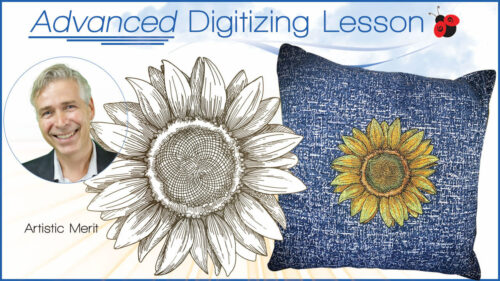 In this lesson, John will walk you through digitizing a detailed sunflower design from start to finish using both advanced artistic merit and color blending techniques. You’ll learn how to properly layer different thread colors without making your designs too dense, how to use opposing stitch angles to change how color is perceived, and how to use a combination of stitch types to create dimension.
In this lesson, John will walk you through digitizing a detailed sunflower design from start to finish using both advanced artistic merit and color blending techniques. You’ll learn how to properly layer different thread colors without making your designs too dense, how to use opposing stitch angles to change how color is perceived, and how to use a combination of stitch types to create dimension. -
-
-
 Level 1 is where we suggest everyone starts whether you’re completely new to digitizing or have been at it for a while. In this level, you’ll learn some of embroidery’s best kept ‘secrets’ & build a solid foundation of embroidery theory. This lesson heavily focuses on the running stitch as it is the primary stitch type used in machine embroidery.
Level 1 is where we suggest everyone starts whether you’re completely new to digitizing or have been at it for a while. In this level, you’ll learn some of embroidery’s best kept ‘secrets’ & build a solid foundation of embroidery theory. This lesson heavily focuses on the running stitch as it is the primary stitch type used in machine embroidery. -
 Level 1 is where we suggest everyone starts whether you’re completely new to digitizing or have been at it for a while. In this level, you’ll learn some of embroidery’s best kept ‘secrets’ & build a solid foundation of embroidery theory. This lesson heavily focuses on the running stitch as it is the primary stitch type used in machine embroidery.
Level 1 is where we suggest everyone starts whether you’re completely new to digitizing or have been at it for a while. In this level, you’ll learn some of embroidery’s best kept ‘secrets’ & build a solid foundation of embroidery theory. This lesson heavily focuses on the running stitch as it is the primary stitch type used in machine embroidery. -
Sale!
 Ready to start making money with embroidery? Whether you’ve never run an embroidery business before or are an experienced embroidery business owner, this webinar will help you find customers, streamline your workflow, increase your profits, and more. The live webinar will air on October 17th, 2020.
Ready to start making money with embroidery? Whether you’ve never run an embroidery business before or are an experienced embroidery business owner, this webinar will help you find customers, streamline your workflow, increase your profits, and more. The live webinar will air on October 17th, 2020. -
Sale!
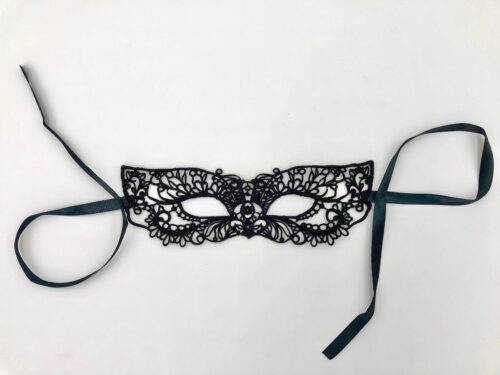 This lesson is a true testament to John’s old-school digitizing roots. Being the last Schiffli Master Digitizer still alive and teaching in North America, in this lesson, John takes you by the hand and teaches you how to manually digitize freestanding lace.
This lesson is a true testament to John’s old-school digitizing roots. Being the last Schiffli Master Digitizer still alive and teaching in North America, in this lesson, John takes you by the hand and teaches you how to manually digitize freestanding lace. -
 Level 1 is where we suggest everyone starts whether you’re completely new to digitizing or have been at it for a while. In this level, you’ll learn some of embroidery’s best kept ‘secrets’ & build a solid foundation of embroidery theory. This lesson heavily focuses on the running stitch as it is the primary stitch type used in machine embroidery.
Level 1 is where we suggest everyone starts whether you’re completely new to digitizing or have been at it for a while. In this level, you’ll learn some of embroidery’s best kept ‘secrets’ & build a solid foundation of embroidery theory. This lesson heavily focuses on the running stitch as it is the primary stitch type used in machine embroidery. -
 Level 1 is where we suggest everyone starts whether you’re completely new to digitizing or have been at it for a while. In this level, you’ll learn some of embroidery’s best kept ‘secrets’ & build a solid foundation of embroidery theory. This lesson heavily focuses on the running stitch as it is the primary stitch type used in machine embroidery.
Level 1 is where we suggest everyone starts whether you’re completely new to digitizing or have been at it for a while. In this level, you’ll learn some of embroidery’s best kept ‘secrets’ & build a solid foundation of embroidery theory. This lesson heavily focuses on the running stitch as it is the primary stitch type used in machine embroidery. -
Sale!
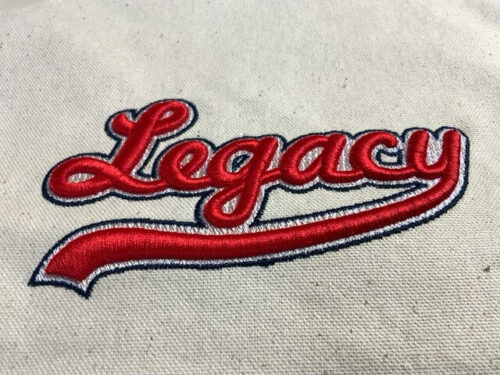 In this interactive lesson, you’ll learn how to create clean and digitize smooth running 3D foam embroidery designs. All the theory you learned from the webinar on digitizing foam will be put into practice within three different designs. Covering athletic block, script, and using foam to create a custom logo. We will also show you how easy it is to add other embroidery effects that will take 3D Foam designs to the next level.
In this interactive lesson, you’ll learn how to create clean and digitize smooth running 3D foam embroidery designs. All the theory you learned from the webinar on digitizing foam will be put into practice within three different designs. Covering athletic block, script, and using foam to create a custom logo. We will also show you how easy it is to add other embroidery effects that will take 3D Foam designs to the next level. -
-
Sale!
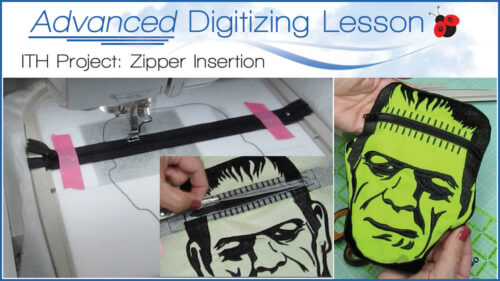 This in-the-hoop (ITH) digitizing lesson will teach you the steps needed to create a custom zipper insertion that can be applied to virtually any embroidery project your mind can imagine. Whether it be bags, pants, jackets, or almost anything else, get ready to take your embroidery projects to an entirely new level with this advanced digitizing lesson!
This in-the-hoop (ITH) digitizing lesson will teach you the steps needed to create a custom zipper insertion that can be applied to virtually any embroidery project your mind can imagine. Whether it be bags, pants, jackets, or almost anything else, get ready to take your embroidery projects to an entirely new level with this advanced digitizing lesson! -
 Level 1 is where we suggest everyone starts whether you’re completely new to digitizing or have been at it for a while. In this level, you’ll learn some of embroidery’s best kept ‘secrets’ & build a solid foundation of embroidery theory. This lesson heavily focuses on the running stitch as it is the primary stitch type used in machine embroidery.
Level 1 is where we suggest everyone starts whether you’re completely new to digitizing or have been at it for a while. In this level, you’ll learn some of embroidery’s best kept ‘secrets’ & build a solid foundation of embroidery theory. This lesson heavily focuses on the running stitch as it is the primary stitch type used in machine embroidery. -
-
-
-
-
-
-
-
 Level 1 is where we suggest everyone starts whether you’re completely new to digitizing or have been at it for a while. In this level, you’ll learn some of embroidery’s best kept ‘secrets’ & build a solid foundation of embroidery theory. This lesson heavily focuses on the running stitch as it is the primary stitch type used in machine embroidery.
Level 1 is where we suggest everyone starts whether you’re completely new to digitizing or have been at it for a while. In this level, you’ll learn some of embroidery’s best kept ‘secrets’ & build a solid foundation of embroidery theory. This lesson heavily focuses on the running stitch as it is the primary stitch type used in machine embroidery. -
-
-
-
-
 The Creative Digitizing Bundle is an exclusive bonus which you’ve received free for purchase level 1 of the ‘Digitizer’s Dream Course’. This non-software specific bundle has sold over 10,000 copies & will dive deep into the theory of digitizing. It will also teach more advanced techniques such as applique, fringe, foam, animals, nature & more.
The Creative Digitizing Bundle is an exclusive bonus which you’ve received free for purchase level 1 of the ‘Digitizer’s Dream Course’. This non-software specific bundle has sold over 10,000 copies & will dive deep into the theory of digitizing. It will also teach more advanced techniques such as applique, fringe, foam, animals, nature & more. -
 Level 1 is where we suggest everyone starts whether you’re completely new to digitizing or have been at it for a while. In this level, you’ll learn some of embroidery’s best kept ‘secrets’ & build a solid foundation of embroidery theory. This lesson heavily focuses on the running stitch as it is the primary stitch type used in machine embroidery.
Level 1 is where we suggest everyone starts whether you’re completely new to digitizing or have been at it for a while. In this level, you’ll learn some of embroidery’s best kept ‘secrets’ & build a solid foundation of embroidery theory. This lesson heavily focuses on the running stitch as it is the primary stitch type used in machine embroidery. -
 Level 1 is where we suggest everyone starts whether you’re completely new to digitizing or have been at it for a while. In this level, you’ll learn some of embroidery’s best kept ‘secrets’ & build a solid foundation of embroidery theory. This lesson heavily focuses on the running stitch as it is the primary stitch type used in machine embroidery.
Level 1 is where we suggest everyone starts whether you’re completely new to digitizing or have been at it for a while. In this level, you’ll learn some of embroidery’s best kept ‘secrets’ & build a solid foundation of embroidery theory. This lesson heavily focuses on the running stitch as it is the primary stitch type used in machine embroidery. -
-
-
-
Educational Embroidery Designs
0

